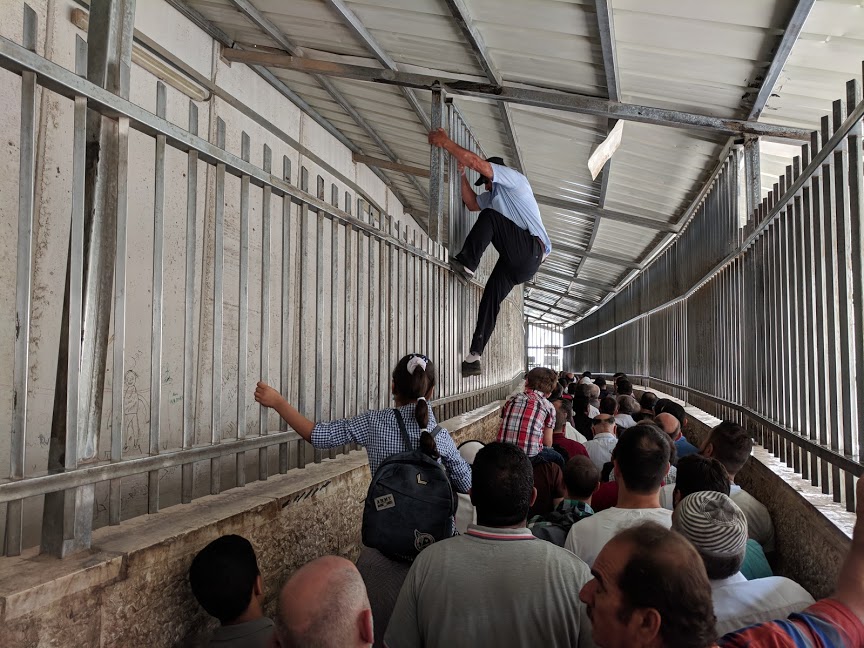An African-American, Caucasian, and Palestinian go to a Checkpoint...
Photo by Andy Larsen
by Andy Larsen
A Peace Catalyst peacemaker for several years, Andy Larsen now uses photography and his experience in the Holy Land to lead peacemaking trips to the region. Find more from Andy at worldlyholiness.com.
This spring, my wife and I spent 12 weeks in Israel/Palestine seeking to listen, learn, and help advocate for a just and lasting peace in the region. Several major events were coming to a head (the US Embassy move, Jerusalem Day, the 70th anniversary of Nakhba, and the Right of Return protests in Gaza), and we observed several protests and other important events as the outside world wondered if the tinder box would explode.
Jerusalem Day. Photo by Andy Larsen
Bethlehem protest. Photo by Andy Larsen
During this time I helped to lead two different tours designed to give participants greater understanding of the complexities of the conflict by facilitating time with people on both sides of the wall. I also guided a class of students from North Park Seminary studying peacemaking in the Palestinian/Israeli conflict. These students, as part of their class, participated in the Christ at the Checkpoint conference and toured several conflict zones. We rubbed shoulders with Palestinians, Israeli soldiers, Christians, Muslims, Jews, and other internationals. It was rich and difficult, heart-wrenching and important. This seems, in my opinion, to be the best way to train future pastors and leaders. It might also be the best way for anybody to understand this conflict and what is required to make peace.
One day in Hebron, in the southern West Bank, we were on a focused tour with a group of students and leaders from around the world, and as we tried to enter the Ibrahimi Mosque (also known as the Cave of the Patriarchs) the Israeli guards wouldn't allow the Palestinians to enter. The soldiers proceeded to search several of the young Palestinian men in our group, lifting their shirts and aggressively asking questions. The soldiers said the rest of us could enter, but we refused to do so on the premise that these were our friends and we weren't about to abandon them. We did not want to be treated with special privilege just because we weren’t Palestinians.
A Palestinian checkpoint. Photo by Andy Larsen
We all experienced the jarring aspects of this event in different ways. One of my Palestinian friends started to experience severe PTSD and related his story of being apprehended from his home in the dark of night as a 12-year-old child and then held in solitary confinement, fed only bread and water for much of 6 months. He committed no crime but was accused of throwing a stone at a protest. Now at 24, he was experiencing a relapse of this horrible memory, prompted by his encounter with the soldiers. Several of my African-American students gasped as they witnessed this. It resembled what they've experienced back in the US, and they identified quickly with our Palestinian friends. Me? I mostly just felt the inconvenience of not being allowed into the building and felt anger as I witnessed the harassment of my friends. It brought back memories of several encounters like this I witnessed while living in Hebron in 2011. I would frequently stand with a young Palestinian for an hour or so at a checkpoint, detained oftentimes simply because a soldier was trying to demonstrate who was in control.
On this particular day, the assignment I required for my students seemed particularly relevant. From a chapter in Reconciling All Things, we learned that, "Lament is not despair. It is not whining. It is a cry of those who see the truth of the world's deep wounds and the cost of seeking peace. It is the prayer of those who are deeply disturbed by the way things are."














